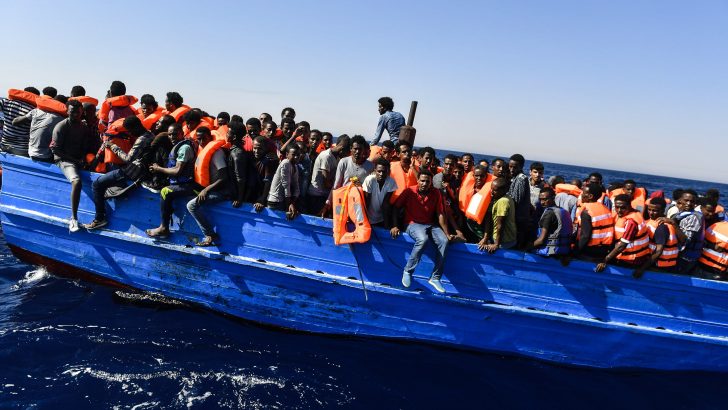Freud famously said that “anatomy is destiny” – perhaps challenged, now, in our transgender era – but for nations, geography surely can be destiny.
Italy currently feels this acutely, as it bears the brunt of the great numbers of migrants brought to its shores. The number crossing the Med, mainly from Libya, is currently at 10,000 a week: Italy has taken 82,000 such refugees in the first six months of this year.
The situation is pitiful: 2,160 have died from drowning, or the effects of exposure, trafficked, as they are in unseaworthy boats.
Irish naval vessels have been rescuing Mediterranean migrants, sometimes on the brink of death, in these waters. We all admire the endeavours of the men and women who do this and the relief on the faces of those rescued is palpable.
Just last month, the LÉ Eithne saved the lives of 183 refugees – many being mothers and babies – just 40 km off the coast of Tripoli, who would otherwise have drowned. The Commander of the LÉ Eithne, Pearse O’Donnell, told the BBC that saving life at sea was a humanitarian imperative – he could not allow people to perish.
Magnet
And yet, Italy is now threatening to close its ports to rescue and charity ships bringing the fleeing migrants. The Italian Minister of the Interior Marco Minniti, has said that other European countries must come to Italy’s support, by taking the migrants to other shores.
Yet geography has deemed that Italy is the main magnet. In the trajectory from Libya, Italy is the obvious goal.
There is also the moral question of whether the practice of rescue actually encourages trafficking.
The traffickers, who charge the refugees thousands of Euros, know that there’s a good chance migrants will be rescued – and that’s an incentive to continue with their exploitative trade.
When people are drowning, they must be saved. The Irish naval rescuers are doing the right thing.
But there will be a reckoning and a backlash if Italy alone has to continue bearing the burden alone of its geographical position.
Finding a capital for re-united Ireland
If Ireland were to be re-united once again, where should the capital be sited? For the sake of political neutrality, it should not – according to various debates – be either Dublin or Belfast. (Australia chose Canberra rather than Sydney or Melbourne for such reasons.)
Athlone has been suggested as has Castleblayney in Co. Monaghan, perhaps because Monaghan, previously a thriving hub, was the county most disadvantaged by the drawing of the border. Corkonions still bat for Cork and some wag has sarcastically nominated “Utopia in Co. Wonderland”.
Surely the answer is obvious: Tara, in Co. Meath, site of the ancient Kings of Ireland, reasonably accessible from all four provinces, and with no party political or partisan political associations. Scenic, too!
Research needed into clerical suicide
It is desperately sad to read that at least eight priests in Ireland have taken their own lives over the past decade, and it surely calls for some response. A helpline is a positive idea, but something more is needed: I’d suggest an investigation into the suicide cases to establish exactly what were the pressures on the lives of these pastors which led them to take the ultimate step in despair. Clinical depression can affect people in any walk of life, but there must be a reason why clerical suicide has risen.
The ecclesiastical authorities should engage a couple of diligent young graduate journalists to produce a comprehensive report, under the guidance of an experienced editor. The first step to correct what is going wrong is to establish why it is going wrong.


 Mary Kenny
Mary Kenny
